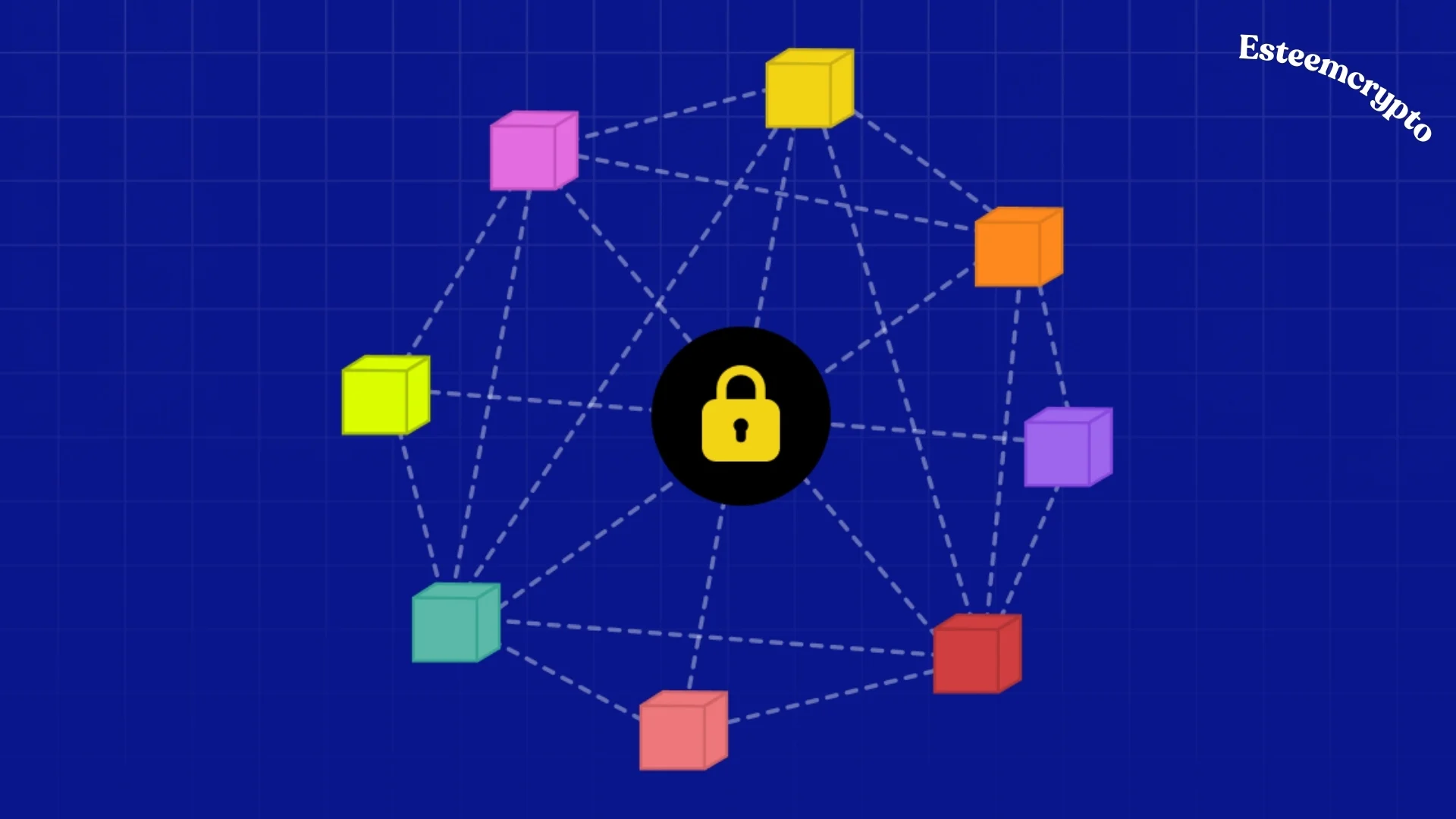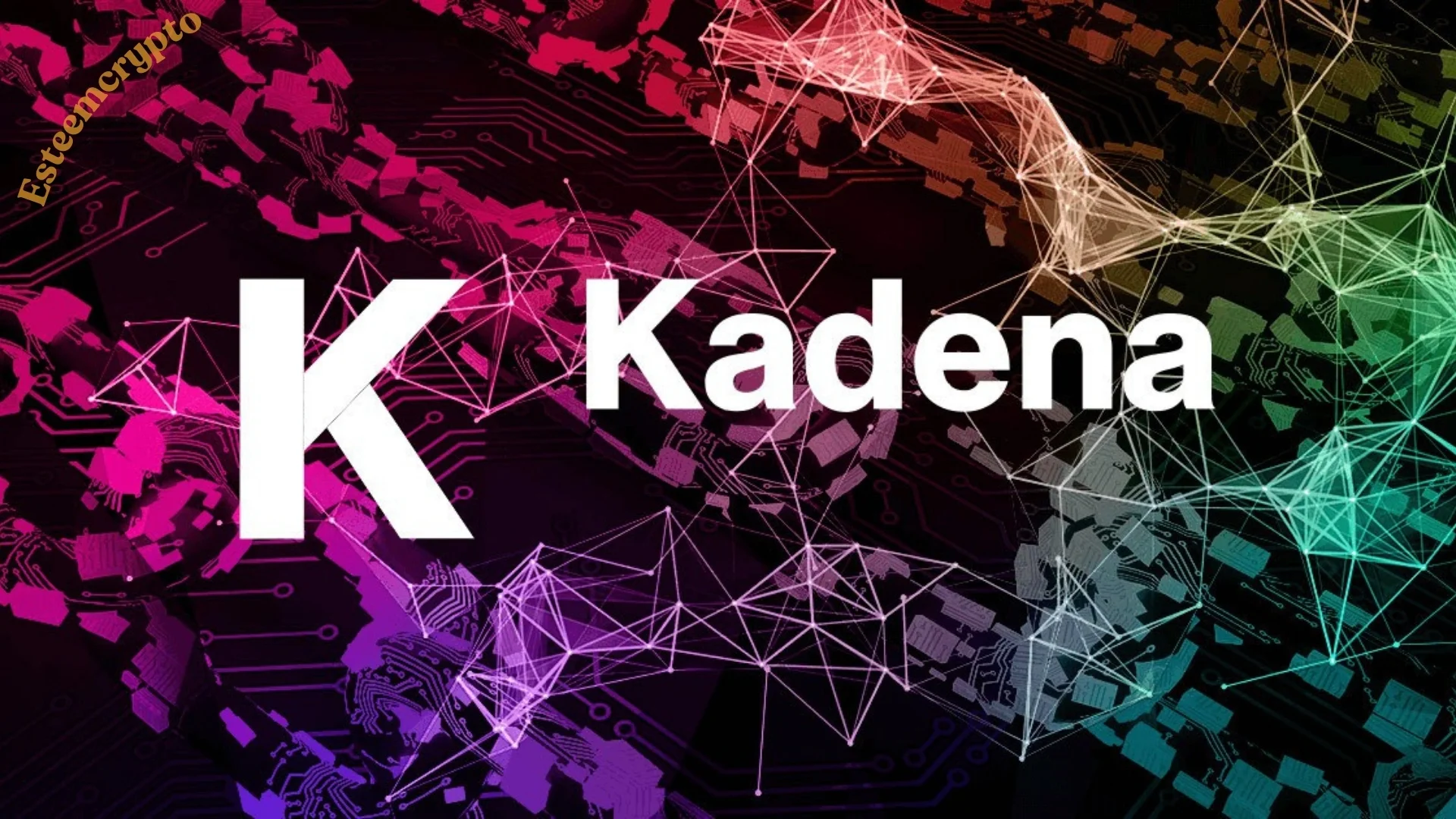Types of Blockchain Networks: A Guide By Esteemcrypto

Types of Blockchain Networks: Blockchain is a shared, unchangeable ledger that makes it easier to track deals and assets (both physical and digital) in a business network. On a blockchain network, almost anything valuable can be recorded and shared, lowering risk and costs for everyone.
A blockchain network is a computer and software set that lets apps use records and innovative contract services. Smart contracts are mainly used to start transactions. These transactions are then sent to every peer node in the network and recorded permanently on each node’s copy of the ledger. App users include end users who use client apps or people who run blockchain networks.
A blockchain network can keep track of orders, accounts, transfers, production, and more. Members all see the exact version of the truth, so you can see all the facts of a transaction from beginning to end. This gives you more trust and more chances to save time and money. Thus, how many blockchains are there?
A consortium usually comprises several organizations working together to build a network. The rights of these organizations are set by rules that the consortium agrees to when the network is first set up. They can also be public, secret, or permission, among other types. This guide will explain the four kinds of blockchain networks, including their pros and cons and what they can be used for.
Key Features of Blockchain Technology

Instead of a single authority, blockchain relies on a decentralized network of users to validate and record transactions. This feature makes Blockchain transactions consistent, fast, safe, affordable, and tamper-proof. These characteristics are explained below:
-
Fast: Transactions are delivered straight from the sender to the receiver, eliminating the need for one or more intermediaries.
-
Consistent: Blockchain networks operate worldwide, 24 hours a day, seven days a week.
-
Inexpensive: Blockchain networks are less expensive because they do not have centralized, rent-seeking intermediaries.
-
Secure: A blockchain’s distributed network of nodes provides collective protection against attacks and outages.
-
Tamper-proof: Data is transparent and cannot be changed once it is time-stamped to the ledger, making the blockchain impenetrable to fraud and other criminal conduct. Similarly, everyone with access to a public blockchain network can see the transactions that have been created.
Types of Blockchain Networks
A blockchain network can be built in various ways. It can be public, private, permissioned, or constructed by a consortium group.
Public blockchain network

Anyone can see a public blockchain, send transactions to it, and expect those transactions to be included if they are true. Anyone can also participate in the consensus process, which decides which blocks are added to the chain and its current state.
Key Features of Blockchain Technology: Public blockchains (Ethereum) are safe because of crypto-economics, which combines economic rewards with cryptographic verification methods like proof-of-work (Bitcoin) or proof-of-stake (Ethereum). In general, these blockchains are thought of as “completely decentralized.” App users can be protected from their developers by public blockchains, which show that certain acts are not even within the app’s developers’ control. Public blockchains are open, so many groups are likely to use them. There is no need for a third party to verify them.
Another reason many people like the public blockchain is that it keeps people’s identities secret. Yes, it is a safe, secure, open place to do business correctly. Also, you don’t have to give out your real name or identity to participate. If you protect your name, no one can see what you do on the network. However, a lot of computing power is needed, deals are not private, and security is not good enough. These are essential things to think about when using blockchain in different fields.
Private blockchain network
Private blockchains, also called managed blockchains, are permissioned blockchains that a single organization runs. In a private blockchain, the leading authority decides who can be a node. The central authority doesn’t always give every node the same permissions to carry out tasks. Because private blockchains aren’t open to everyone, they’re only partly decentralized.
Two types of private blockchains are Ripple XRP $0.50, a network for businesses to trade virtual currencies, and Hyperledger, a project that brings together open-source blockchain apps. When businesses share networks, they often need a higher level of privacy to protect the privacy of their data. If this is one of your wants, a private blockchain is the best choice. Private blockchains are undoubtedly a more stable network option because only a few users can see certain activities.
Compliance is also essential in every business. Tech that doesn’t follow strict compliance rules will eventually fail. Private blockchains follow and include all compliance rules in their environments to ensure smooth and easy transactions.
One problem with public and private blockchains is that public ones take longer to verify new data than private ones. Another issue is that fraud and bad players can quickly access private blockchains. A centralized method also tends to make people rely too much on external management tools and favors a small group of companies in the same industry. Consortium blockchains were made to fix these problems.
Consortium blockchain network
The difference between private and consortium blockchains is that the latter are permissioned blockchains managed by a group of companies rather than just one. Consequently, security is enhanced in consortium blockchains due to their higher decentralisation level than private blockchains. However, consortiums require numerous enterprises to work together, which can cause logistical issues and antitrust violations.
Supply chain participants may lack the infrastructure and technology required to implement blockchain technology. The initial investment required to digitize data and establish connections with other supply chain participants may be too much for some to bear.
R3, a popular corporate software provider, offers consortia blockchain solutions for several industries, including finance. CargoSmart created the nonprofit blockchain consortium Global Shipping Business Network Collaboration to improve maritime operator cooperation and digitalize the shipping industry.
The consortium blockchain is protected from dominance despite being governed by one institution. Once everyone agrees, this supervisor can enforce regulations, alter balances, and cancel defective transactions. It also does other things to help companies with the same purpose collaborate. The consortium blockchain is private since no one can see confirmed block data. Anyone with a blockchain account can view it. Consortium blockchain transactions are free.
The versatility of consortium blockchain distinguishes it from public blockchain. The public blockchain may have consensus and synchronization issues with maximal validators. Forks result from divergence, but consortium networks are immune. Consortium blockchain has drawbacks that exceed benefits. One of the most significant issues with this blockchain is that it is centralized and vulnerable to bad actors.
Launching the consortium blockchain involves delicate steps. Everyone needs to approve the members’ communication procedure. However, setting up a public network that links firms requires more effort because enterprises aren’t as adaptable as small businesses.
Permissioned blockchain network

Companies that build their private blockchains usually set up permissioned blockchain networks. This controls the access to the network and the types of transactions that users are allowed to undertake. Anyone interested in taking part must acquire permission or an invitation in advance.
Data on permissioned blockchain networks is not kept in a single repository but made accessible to everybody, at any moment, from any place, thanks to the platform’s decentralization. It guarantees that the signatures on all records are unchangeable. Due to the cryptographic encryption of all information exchanges and transactions, the entire system is safe and data protected.
Key Features of Blockchain Technology: The permissioned blockchain also has the benefit of being transparent. The data and information are visible to everyone. Unfortunately, this advantage has backfired, and now people are worried about the permissionless blockchain’s data security. The permissioned blockchain eliminates the need to verify one’s identity. All that’s required to join the network is the allocation of computer power. Anyone can join the system after finding the nonce value and completing the complicated mathematical puzzle.
Many organizations find permissionless blockchain technology problematic because of its restrictions. They believe it is not a good fit for marketing corporate solutions. These problems drive the permissionless blockchain Ethereum to abandon proof-of-work in favour of proof-of-stake as its consensus mechanism.
While it’s encouraging that traders can stay anonymous, dealing with such a system can be a pain. The permissionless blockchain prevents, for instance, the identification of individuals participating in a transaction or a scam. Thantages, many people use blockchain for illicit p because of these advantages.
Industries that Use Blockchain Networks
Blockchain technology can benefit several industries, including gambling, real estate, supply chain management, and banking. Smart contracts are self-executing code stored and accessible on an immutable blockchain. They allow individuals and businesses to perform ordinary commercial interactions without the cost and uncertainty of communicating with third parties.
Litecoin (LTC), $78.85; Bitcoin Cash (BCH), $429; and Bitcoin (BTC), $61,960, among many other payment-focused cryptocurrencies, demonstrate the use of blockchain technology. Blockchain technology is far more accessible and efficient than traditional third-party payment processors.
Energy providers, including utilities, gas and electric companies, and suppliers, can benefit from blockchain technology in several ways. <strong>Types of Blockchain Networks. One use is smart grids, which require a regional exchange to balance the supply and demand for electricity. Another use case for blockchain technology is safely exchanging data across residential smart meters.
Blockchain network protocols are also helping other industries find innovative solutions, especially those that deal with digital identification and healthcare, which depend on safe and efficient data ownership and management methods. By utilizing public-key cryptography, which allows users to have a public key for receiving transactions and a private key for sending them, blockchains allow users to remain anonymous while securely transferring data.
Worldwide, governments and agencies are exploring the potential of blockchain technology as a means to improve transparency, increase confidence among citizens, and secure transactions. Some examples of sensitive information that governments can use blockchains to secure include social security numbers, addresses, driver’s license numbers, and birth dates. Saving money and reducing waste are two potential benefits of blockchain technology for the public sector. Blockchain technology has the potential to simplify processes, remove duplication, and guarantee the integrity of data.
Blockchain Technology Challenges
xt-align: justify;”><strong>Types of Blockchain Networks: Although there are many benefits, attacks and centralized control can easily compromise blockchains that do not have a validated consensus process or a stable ecology of network participants. Essential considerations include decentralization and throughput, or the quantity of data a blockchain can process in a specific time frame. The Blockchain Trilemma, which involves finding the sweet spot between decentralization, security, and scalability in a single network, is all the rage right now.
Environmental concerns are another area of focus when discussing blockchain technology. One example is the high power consumption of the proof-of-work (PoW) consensus mechanism. Some fear blockchain technology will be too complicated and intimidating for companies and individuals.
With its meteoric rise to fame in international finance, blockchain technology has begun to permeate other industries and our daily lives. The public is starting to understand the possible benefits of goods and services based on blockchain technology, and the technology is acquiring traction in various industries. Regrettably, the sector is displaying no indications of slowing down despite the immense potential of blockchain technology to interact with or even replace the present digital architecture of our planet.




